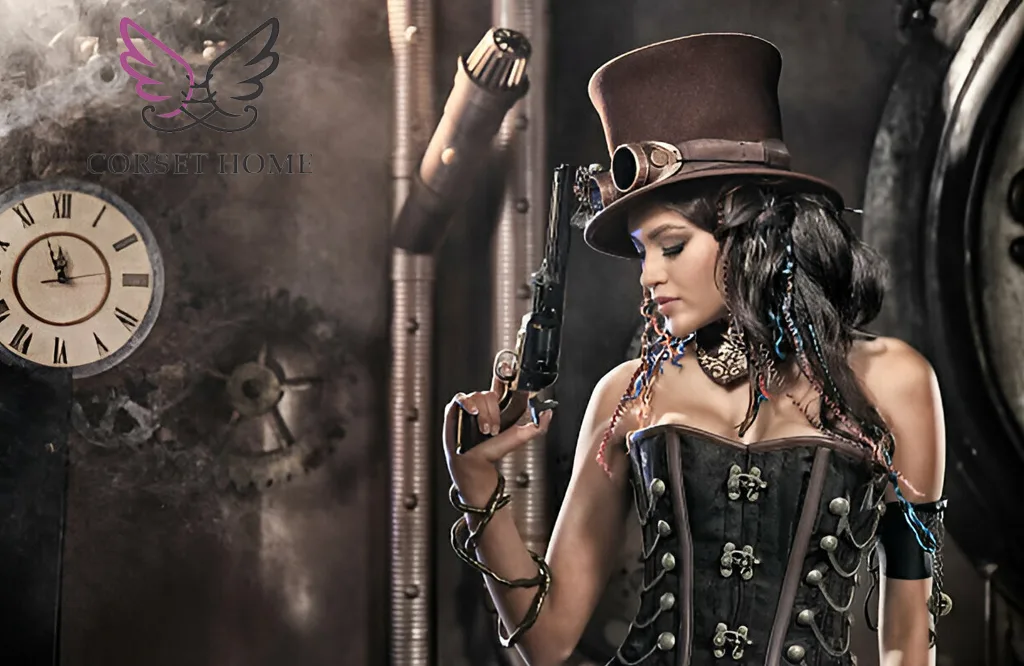The corset is one of the most iconic and enduring garments in the history of fashion. With its roots stretching back centuries, the corset has evolved significantly, adapting to the changing ideals of beauty and fashion. But who exactly invented the corset, and how has it transformed over the years? This blog delves into the origins of the corset, tracing its journey from ancient times to the modern era, and explores the key figures and moments that shaped its development.
Who Invented the Corset? Ancient Beginnings
The history of the corset dates back to ancient civilizations, where early forms of body-shaping garments were used. In ancient Greece, women wore a garment called the “zona,” a belt that cinched the waist. Similarly, in ancient Rome, the “strophium” was used to bind the breasts and shape the torso. These early garments were precursors to the corset, reflecting the desire for an idealized body shape even in ancient times.
The Birth of the Modern Corset
The true origin of the corset as we know it today is often traced back to the 16th century in Europe. It was during this period that the garment began to take on its distinctive shape and purpose. Catherine de’ Medici, the Italian-born Queen of France, is often credited with popularizing the corset in the French court. She allegedly imposed a ban on thick waists at court, encouraging the use of corsets to achieve a slim silhouette.
The early corsets of the 16th century were made from stiff materials such as iron, wood, and whalebone, and were designed to flatten the bust and create a conical shape for the upper body. These early designs were quite rigid and uncomfortable, reflecting the societal ideals of beauty and modesty of the time.
The Evolution of the Corset in the 17th and 18th Centuries
As fashion evolved, so did the corset. In the 17th and 18th centuries, the garment became more refined and less rigid. The introduction of new materials, such as steel and busks, allowed for greater flexibility and comfort. During this period, corsets began to emphasize the waist, creating the iconic hourglass figure that is still associated with corsets today.
The 18th century also saw the emergence of the “stay,” a type of corset that provided support and shaping without the extreme constriction of earlier designs. Stays were often elaborately decorated, reflecting the opulence of the Rococo period. This era also saw the rise of the “paniers,” wide hoops worn under the skirt to accentuate the waist further.
The 19th Century: The Golden Age of the Corset
The 19th century is often considered the golden age of the corset. This period saw significant advancements in corset design and manufacturing, making them more accessible to women of all social classes. The introduction of the sewing machine in the mid-19th century revolutionized corset production, allowing for mass production and standardized sizing.
During the Victorian era, the corset reached new heights of popularity. Women of all ages and social standings wore corsets to achieve the fashionable hourglass silhouette. The “tight-lacing” trend, where women would cinch their corsets to extreme tightness, became a symbol of beauty and status. However, this practice also led to health issues, such as fainting and organ displacement, sparking debates about the safety and ethics of corsetry.
The 20th Century: Decline and Revival
The early 20th century marked the decline of the corset as a mainstream garment. The changing social and cultural landscape, including the women’s suffrage movement and the rise of more practical clothing styles, led to a shift away from restrictive garments. By the 1920s, the corset had largely fallen out of favor, replaced by more comfortable and flexible undergarments like the brassiere and the girdle.
However, the corset never completely disappeared. In the mid-20th century, it experienced a revival in the world of high fashion. Designers like Christian Dior brought back the cinched waist with his “New Look” collection in 1947, which featured garments with a nipped-in waist and full skirts. The corset became a symbol of elegance and glamour, rather than restriction.
The Modern Corset: Fashion and Function
Today, the corset has found a new place in the world of fashion. No longer seen as a mere undergarment, the modern corset is often worn as outerwear, making a bold fashion statement. Designers like Vivienne Westwood and Jean Paul Gaultier have reimagined the corset, incorporating it into contemporary styles and pushing the boundaries of traditional fashion.
The corset has also become a symbol of empowerment and body positivity. Modern corsetry focuses on comfort, fit, and individual expression, allowing wearers to celebrate their bodies and personal style. Whether it’s a sleek black corset for a night out or a gold corset for a special occasion, the garment continues to captivate and inspire.
FAQs
Who invented the corset?
While the exact inventor of the corset is unknown, its origins can be traced back to ancient civilizations. The modern corset, as we know it, began to take shape in the 16th century, with significant contributions from European fashion.
What materials were used in early corsets?
Early corsets were made from stiff materials such as iron, wood, and whalebone. Over time, new materials like steel and busks were introduced, allowing for greater flexibility and comfort.
When did the corset become popular?
The corset became particularly popular during the 16th century and continued to evolve through the 17th and 18th centuries. The 19th century is considered the golden age of the corset, with widespread use across all social classes.
Why did the corset decline in popularity?
The decline of the corset in the early 20th century was due to changing social and cultural norms, including the women’s suffrage movement and the rise of more practical clothing styles.
How is the modern corset different from historical corsets?
Modern corsets are often worn as outerwear and focus on comfort, fit, and individual expression. They are made from a variety of materials and are designed to celebrate the wearer’s body and personal style, such as a sleek black corset for a night out or a gold corset for a special occasion.
Where can I buy a corset?
You can find a wide range of corsets at Corset Home, where we offer styles for every occasion, from classic designs to contemporary fashion pieces.
Are corsets safe to wear?
Modern corsets are designed with comfort and safety in mind. It is important to choose a well-fitted corset and avoid excessive tight-lacing to ensure a safe and enjoyable experience.
Can men wear corsets?
Yes, corsets are not limited to women. Men can wear corsets for fashion, support, or body shaping. Many designers offer corsets specifically tailored for men.
Conclusion
The corset has a rich and fascinating history, evolving from ancient body-shaping garments to modern fashion statements. Whether worn for style, support, or empowerment, the corset continues to be a symbol of beauty and individuality. At Corset Home, we celebrate this timeless garment and offer a wide range of corsets to suit every taste and occasion.

